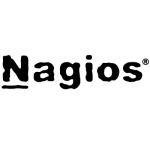What is our primary use case?
Twice a year we do a server buy. We get in maybe 20 blade chassis. So, we would have a significant amount of servers to actually provision. We use OneView to change all the buyer settings, and it stops us having to go into each server and do it manually, which normally takes about ten minutes per server. However, we can just use OneView, do it all together, and have the whole thing setup and ready to be provisioned by the OS.
That is what we use it for, and it is performing really well.
How has it helped my organization?
- The speed that we can provision servers
- The automatic case logging with HPE
They are pretty good.
What is most valuable?
The most valuable thing is the speed, in which we can provision servers, and the remote support, which is automatically set up as well. The remote support automatically logs service calls and support cases with HPE, which is really good.
What needs improvement?
One thing which is missing is that you can't actually log a support call yourself. So, it's automatic, if a machine has gone wrong. However, sometimes it does not actually log a call for you, so it would be nice to actually be able to click "submit a case" within OneView instead of having to go out, login to Insight Remote Support's website and do it from there. That would be a good feature.
Buyer's Guide
HPE OneView
October 2025
Learn what your peers think about HPE OneView. Get advice and tips from experienced pros sharing their opinions. Updated: October 2025.
872,778 professionals have used our research since 2012.
For how long have I used the solution?
Less than one year.
What do I think about the stability of the solution?
I know there is a new version (v.4), but we are using v.3.1, which is pretty stable. We have not had any downtime in our six months of use.
What do I think about the scalability of the solution?
You can throw as many servers at it as you want. So, there is no problem there.
How are customer service and support?
I have not used technical support yet.
Which solution did I use previously and why did I switch?
We did not have a previous solution.
We needed a solution for a long time just to save time, because if you are doing 120 servers and having to go into each one, boot it up, wait for it to reboot, and change settings, then you might make mistakes if you are doing that many servers. So, just to have it all automated and being able to do it in one go, it is quite good.
How was the initial setup?
The initial setup was straightforward enough. You just need the VM, then load the software on and away it goes.
What about the implementation team?
What's my experience with pricing, setup cost, and licensing?
Before looking into the solution, I was looking for something which could buy us changes, but at the time, HPE had some other solutions, but they were actually quite expensive to buy. So, when OneView came along, it was kind of reasonable in terms of price for licenses, etc.
Which other solutions did I evaluate?
No. We are a big HPE site. We use HPE SA and HPE OO for OS provisioning.
What other advice do I have?
Go for it, because its ease of use and setting it up. Once setup, then it is more or less, forget about it. It just works away in the background.
Most important criteria when selecting a vendor: ease of use. If you are talking about an application like OneView, this was ease of use. The desktop and the dashboard are actually quite good. We have the dashboard up on a big screen, and you can actually see when things go wrong or if there are any faults with any of the servers. The backup is automated as well, so the appliance is quite good.
Disclosure: My company does not have a business relationship with this vendor other than being a customer.
















